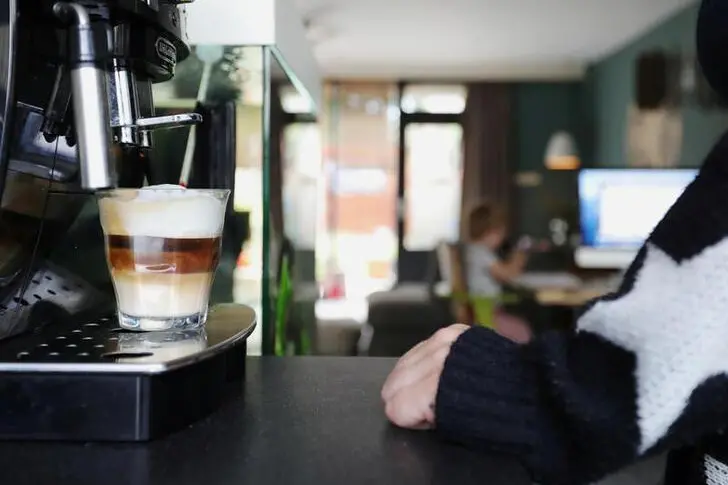PHOTO
(John Kemp is a Reuters market analyst. The views expressed are his own)
LONDON- Decisions on where and how to work are embodied in trillions of dollars of investment worldwide, including the siting of commercial and residential real estate as well as transportation systems and other infrastructure.
Even a small shift in work patterns and behaviour can unleash hundreds of billions of dollars of new capital spending, while devaluing older assets that are no longer fully utilised.
The enormous investments in employment, real estate, transport, energy supply and other utilities ensure they have considerable stickiness or inertia, with changes normally measured over decades.
Occasionally, however, the system’s ordinary evolution is accelerated by a shock such as war, revolution, disaster, disease or technological change, speeding the creation of new investments and obsolescence of old ones.
Though there is normally strong opposition to system-level changes, the disruptive forces can sometimes become so strong that they overcome the natural inertia and result in rapid change (“The lever of riches: technological creativity and economic progress”, Mokyr, 1990).
ACCELERATOR
COVID-19 is becoming a prime candidate as a change accelerator because of its magnitude (the largest economic disturbance since the Second World War) and duration (likely to be more than 12 months).
The pandemic has left parts of the system largely unchanged, including agriculture, mining, manufacturing and freight transport, where the nature of the work limits changes that can be made to its location or performance.
But other parts, including retailing, professional and business services, travel and tourism, hospitality, entertainment and higher education, have been hit by the largest shock since 1945.
The affected industries are particularly clustered in primary cities and global hubs, which explains why the epidemic is centred on such places and poses the greatest challenge to their future.
For similar reasons, the biggest impact has been in the advanced economies of North America and Europe, where these industries account for a higher share of employment and output.
REASSESSMENT
In North America and Europe, the epidemic has forced a reassessment of the desirability of working in large, densely populated cities and relying heavily on public transport.
Remote working has become a necessity for some and highly desirable for many others, accelerating a trend already in motion.
History is full of examples of princes, merchants and wealthy individuals temporarily fleeing plague-hit cities for the safety of small towns and the countryside (“The Decameron”, Boccaccio, 1353). But what makes the coronavirus crisis different is that communications technology now enables them to stay there after the epidemic is brought under control.
Nonetheless, central workplaces and cities continue to have advantages, including professional networking, creative interactions and transmission of expertise from more experienced to less experienced workers.
While some of the advantages from centralised working benefit individual employees, others accrue to employers and landowners, giving them a strong stake in its continuation.
POPULAR COMPROMISE
Blended working, where employees split their time between working remotely and from a central office has emerged as a popular compromise for a post-pandemic workplace solution.
It offers employees more flexibility while ensuring employers continue to capture at least some advantages from centralised interactions. Blended working also offers a reduction in commuting while protecting the value of commercial real estate in cities.
But blended working creates challenges of its own and is not necessarily superior to either fully remote or fully centralised employment. Among these, employees and employers both have to maintain workspace, paying for space used only part of the time.
The obvious solution for employers is some form of hot-desking, which had become increasingly popular before the pandemic but could be harder to promote post-pandemic.
The solution for employees is less obvious, since there are fewer options for multiple uses of dedicated workspace at home.
With increased hot-desking, employers would have to find a way of scheduling the use of space to maintain the advantages of collaboration while ensuring not all employees attempt to use the office at the same time.
There is also the question of travel to and from work in terms of cost, distance and time.
The need for more space suggests relocation further from city centres in search of better affordability. But the need to continue travelling to a central location suggests the need to remain within easy commuting distance.
PUBLIC TRANSPORT
Public transportation systems are designed to move large numbers of workers to and from central workplaces every day, and their affordability depends on economies of scale.
Fixed costs are high. If the number of journeys declines significantly, public transit systems become more expensive to maintain.
Blended working could reduce peak loading, or enable a larger population to be served with the same capacity, but only if the reduced number of journeys can be spread out over the available days.
Transit systems would need to find a charging system that would even out journeys across the week, though that would counter the advantage of having employees in the office at the same time.
SYSTEM EVOLUTION
The confluence between the COVID-19 pandemic and modern communications presents a profound challenge to the location of employment and population for some cities.
The forces of inertia favour a return to central working, but the longer the pandemic lasts, the weaker they will become, and the evolution of the system points to a significant future increase in remote working.
For its proponents, blended working offers a sensible, low-risk compromise, but there is also the potential for creating the worst of both worlds.
(Editing by David Goodman) ((john.kemp@thomsonreuters.com))












